- Volkswagen’s saviours
- Ivan Hirst – Senior Resident Officer
- Heinrich Nordhoff – General Director
- Wolfsburg wunderkinder
- Kübelwagen
- Type 3 Variant panel van
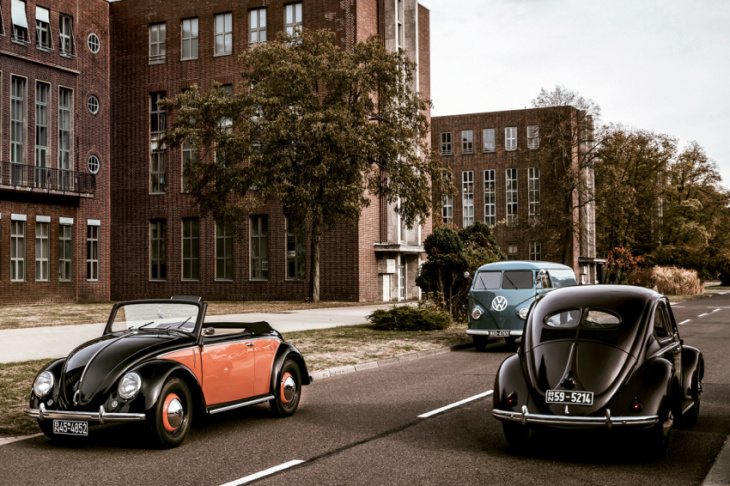
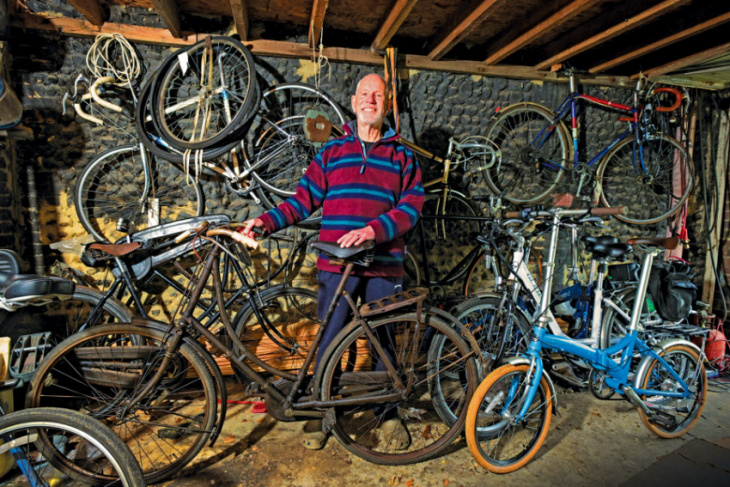


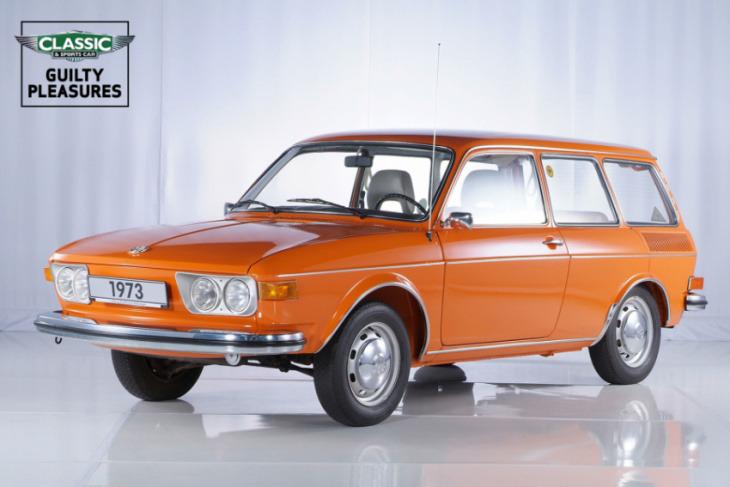



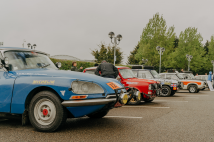
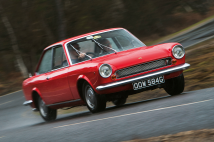
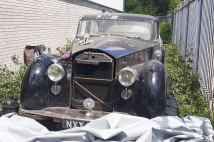


For the latest classic car news, features, buyer’s guides and classifieds, sign up to the C&SC newsletter here
The atmosphere in Wolfsburg in 1949 was depressing, as journalist JA Elten wrote in a report for the Süddeutsche Zeitung on 22 January: ‘Dominated by barracks-like, unadorned apartment blocks, criss-crossed by well-worn footpaths and splinter ditches, covered with junk, rabbit holes and individual allotment gardens.’
The impact of the air raids that had destroyed a good two-thirds of the city more than four years earlier still reverberated through daily life.
The inhabitants, numbering 25,000 in total, included 10,000 refugees and nearly 1000 families living in simple shacks; this fragmented and deprived environment was said to risk disenfranchising people from society, referred to locally with the term homo barackensis.
Volkswagen’s 1300-metre-long plant under construction in Wolfsburg in 1939 © Getty
After the war, the British occupying forces confiscated almost the entire city because it represented former National Socialist assets.
Local housing was hard to come by and the economy stagnated.
The occupying powers had originally planned that the Ford factory in Cologne should meet the demand for cars in Germany, and all others should be dismantled.
However, the Volkswagen works had survived the bombing raids relatively unscathed and had been producing the Beetle since 1945.
An early Volkswagen Beetle parked in the villa quarter of Wolfsburg
At first used as a facility for the repair of various military machinery in the aftermath of WW2, controlled by the Royal Electrical and Mechanical Engineers (REME), it made the transition to repairing Volkswagens under the banner of the No 2 REME Auxiliary Workshop, largely thanks to the enterprising efforts of an interim leadership team including British Major Ivan Hirst.
For some of the city’s residents, the plant’s operations also provided additional living comfort: in partnership with the Lower Saxony Ministry of Labour, the Volkswagen factory team succeeded in building several apartment blocks.
VW general director Heinrich Nordhoff, who was appointed by Major Hirst in 1948, personally provided the stadtmitte (city centre) with 275 mattresses.
The Beetle’s low-compression flat-four is good for 25bhp
At the end of May 1949, as the new Federal Republic of Germany’s constitution, the Basic Law, came into force in the wake of the currency reform the previous year (introducing the Deutsche Mark), an economic boom stirred throughout Germany.
The Volkswagen factory was handed back into government control and Wolfsburg, with a burgeoning motor industry and a housing market in desperate need of the Basic Law’s new property rights, all but exploded with this new growth and optimism.
The change required not only appropriate logistics, but also transport vehicles. So, in November 1949, Nordhoff presented the VW Transporter Type 2 T1.
A simple interior helped to keep the Beetle’s production costs low
Largely derived from the Beetle, it was robust and simple to maintain, with a loading capacity of three quarters of a ton. Series production of the T1 began a year later, after the 100,000th Beetle had rolled off the production line on 4 March 1950.
The shift from homo barackensis to this new spirit of confidence and productivity couldn’t have been more stark. New workers were drawn to a city bustling with activity and the VW plant even pioneered leisure projects.
An outdoor pool, unveiled as a gift to the city in the summer of 1951, was built in just three months and forever known as the ‘VW bathroom’.
An early VW Beetle emerges from the factory in Wolfsburg © Volkswagen AG
In 1952, Volkswagen established its own housing construction company to keep up.
Wolfsburg continued to grow, with projects such as The Goethe School, finished in 1951, and both Catholic and Protestant churches built to serve the flourishing community.
The foundation stone for a city hospital followed in 1953, then a year later football club VfL – and its Elsterweg stadium – was promoted to the Oberliga Nord, then the highest German division, hanging on the coat-tails of the national team’s 1954 FIFA World Cup win.
More expensive Beetle convertibles began to appear in Wolfburg’s upscale areas – the Hebmüller model, with its two-tone paint, was a popular choice
But it wasn’t all rosy optimism. The Gifhorn health department criticised the increasing problems within the barracks apartment blocks that dominated the city; on the part of the residents, there were major complaints about moisture and rheumatic diseases.
The so-called ‘community camp’ was even regarded as: ‘Consistently ready for demolition and an early relocation of the residents necessary.’
There were lingering harmful elements from the immediate post-war years, too.
The convertible Beetle’s interior was mostly unchanged from the standard saloon car
In 1956, Mayor Uwe-Jens Nissen diagnosed a “moral brutalisation” of the youth and found the explanation in the precarious housing situation.
“As a rule, young people are at risk simply because the thin wooden walls let any noise through,” he said, “and children witness scenes that they cannot cope with according to their age.”
There was still a long way to go. Nevertheless, exports continued to boom.
The Beetle production line in 1949, the first year they were exported to the USA © Getty
From 1954-’55 alone, sales in the USA tripled to 35,000 cars.
From the spring of 1955, 1000 Beetles were rolling off the Wolfsburg conveyor belt every day, in an astonishing extrapolation of the efforts of the Corps of Royal Electrical and Mechanical Engineers.
In celebration, Federal Chancellor Konrad Adenauer was greeted by Nordhoff and driven through the factory in an open Beetle.
Production of the VW Transporter Type 2 T1 began in 1950, shortly after the 100,000th Beetle rolled off the production line
Then on 5 August 1955, the firm celebrated its millionth Beetle.
“At our plant, we see the almost 30,000 people in the foreground much more than the thousands of machines,” Nordhoff said, standing in front of the workforce and sporting a large cross of merit with a star, as the first honorary citizen of Wolfsburg.
Dated apartment buildings notwithstanding, the city had quickly become rich with activity and opportunity.
The Transporter Type 2 was simple to maintain and largely derived from the Beetle
There were shops lining the route to work for employees: grocers, textiles, shoes, books, bicycles and furniture.
The fish hall at the Kaufhof was something special: peering through the shop window into the water, the customer could choose the fish they would like to have served in the evening.
Next door was the famous Cadera bakery with its mini café, while customers’ children got sweets for free at grocery store Lebensmittel Tengelmann.
The Transporter Type 2 T1 uses the same 1131cc engine as the Beetle
In 1956 the Imperial, the city’s second cinema, was opened, and a year later the old train station – referred to by councillors as “the wretched shack” – was replaced by a new building.
More than 6000 commuters took the train every day, despite the fact that the Beetle continued to mobilise more and more German citizens: the two millionth example was produced in ’57, with the three millionth following two years later.
In the upscale areas that housed the executives and in the early villa quarters, the prosperity was clear to see. Not only was mass motorisation breaking into the city, or autostadt, but luxurious Beetle convertibles were beginning to appear.
The finished VW factory in Wolfsburg, c1945 © Getty
These open-top VWs were assembled by firms such as Karmann in Osnabrück, 140 miles to the west of Wolfsburg, and Hebmüller in Wülfrath, some 100 miles further south.
Costing around 50% more than the standard saloon cars of the time, these glitzier Beetles never sold in the same volumes as the tin-top, and the small but talented Hebmüller concern went bankrupt in 1952.
In the working-class neighbourhoods, on the other hand, the previous struggle to earn a living was turning into the more familiar struggle to balance finances in the home.
On the eighth, 18th and 28th of each month, wives stood at the factory gates to receive their husbands and liberate their wages before they reached drinking holes such as the famous Margarete Schrader’s.
Although it’s not fast, the Type 2 T1 features a loading capacity of three quarters of a ton
‘Mutti’, or ‘Frau Schrader’, would keep the beer taps flowing and host games of skat, in which losers would have to stump up for their three rivals’ next round at a cost of 1.05 marks, equivalent to an hourly wage.
Others would frequent the Altdeutsche Bierstube in the hope of meeting the football stars of VfL.
Meanwhile, the rock ’n’ roll generation was in the Pinguin milk bar, sitting on red vinyl stools and ordering shakes from barmen in crisp white jackets.
The VW Type 2 T1 did without a rear bumper until 1953
Fashionable boys wore studded trousers and the girls wore petticoats, while the German-made Tonomat jukebox blared from the other end of the bar.
The mood was set, then, when the town hall opened in 1958 with space for crowds of 3000-plus and where the likes of Freddy Quinn, Louis Armstrong, Benny Goodman and German star Ted Herold appeared.
This was a city of 60,000 people, all looking to the 1960s, and the new town hall’s design was a departure from the autostadt’s once uniform aesthetic.
The Volkswagen factory went from strength to strength, but so too did Wolfsburg as it grew into a force of its own.
Words: Michael Schießl
Images: Roman Rätzke, Volkswagen AG, Getty
Volkswagen’s saviours
Ivan Hirst – Senior Resident Officer
Ivan Hirst was Senior Resident Officer at Volkswagen between 1945-’49 © Volkswagen AG
Major Ivan Hirst remains a legend in the history of the automobile in Germany, as the true saviour of Volkswagen.
Having arrived at the Wolfsburg plant in August 1945, Hirst was appointed British Senior Resident Officer of the Control Commission.
He prevented the planned dismantling of the Volkswagen plant by securing new orders from the British government, and the reserved but resolute officer started series production on 27 December 1945.
A technology-loving engineer, Hirst ensured the quality of the vehicles and organised the establishment of a dealer and service network. He also ordered works council elections for the first time.
In 1947, the British permitted exports from the plant, with the first shipment going to The Netherlands.
As the years went by and operations continued in earnest, the British military took a step back and gave civilian managers greater responsibility.
Hirst recommended former Opel manager Heinrich Nordhoff as the man to take over as general director before leaving the Wolfsburg plant in 1949, but remained in Germany as part of the foreign office.
He later went on to serve in the Organisation for European Economic Co-operation until his retirement in 1976.
Major Hirst died on 10 March 2000 at the age of 84.
Heinrich Nordhoff – General Director
After being shunned by Opel, Heinrich Nordhoff was appointed general manager at VW in 1948 © Volkswagen AG
Although exonerated in the denazification process, as a former military economist commended by the Nazi regime Nordhoff was barred by the Americans from returning to his work at Opel, where he had been commercial/technical director.
The British team at VW was more accommodating and appointed him as general manager of Volkswagenwerk GmbH on 1 January 1948, on the recommendation of Major Ivan Hirst.
Nordhoff realised that exports were crucial, so led a programme to develop the Beetle. “The Volkswagen has more flaws than a dog,” he said, and began improving the car with his technicians.
In 1953 there was a synchronised gearbox, then the famous ‘pretzel’ rear window was replaced by a single pane.
Management was also streamlined, making cost savings that allowed repeated price reductions: in 1949 the Beetle cost 5050 marks, but by ’55 it was down to 3750.
After 12 years, the VW plant had become the largest in Europe and Nordoff was soon known as the ‘King of Wolfsburg’.
The press was often critical, accusing him of being old-fashioned and even lazy, but when calls came for his resignation, he opened the gates of the development department and presented 36 new models, all developed to production readiness, but they were never built.
Nordhoff also fostered production in Brazil and Mexico before the ‘King of Wolfsburg’ died suddenly of a heart attack on 12 April 1968, at the age of 69.
Wolfsburg wunderkinder

The Wolfsburg works is the world’s largest car-making plant, delivering thousands of Volkswagen newborns to expectant parents in over 50 countries every day.
Inspired by Henry Ford’s pioneering production lines, construction of the factory to build Hitler’s KdF-Wagen (Strength through Joy Car) began on 26 May 1938.
More than 46 million vehicles have left the gates since it reopened for business in 1945, and it only took a decade to get to its millionth Beetle.
Nearly 12m left Wolfsburg before the baton passed to the Golf in 1974, which is still built there today, but not all of its products have enjoyed the same sales success.
Kübelwagen
VW’s Kübelwagen was built for the German army
The first post-war vehicle manufactured under Allied control wasn’t the Beetle, but the utilitarian Kübelwagen (Type 82).
During the dark times of conflict, more than 50,000 were built for the German army (plus 14,265 aquatic Schwimmwagens), but after liberation in May 1945 the US Army continued to make these ‘VW Jeeps’ for its own troops.
A month later, the British took over and got the plant functioning as a civilian vehicle factory, bringing production of these wonderfully basic military machines to an end.
Type 2
The VW Type 2 spawned many variations, becoming a cult icon along the way
Known around the world by different names, we have the ‘camper’ here in the UK, ‘bus’ in the US, and ‘Bulli’ in Germany, loosely translated from ‘bus and delivery van’ or bus und lieferwagen.
Initially derived from VW’s first model, the Type 1, it was given its Type 2 designation to prevent confusion. Clearly that didn’t work, especially because the multiple variants all carried their own monikers such as panel van, minibus, transporter, microbus, Samba…
That aside, it managed to be both a commercial working tool, a cult icon and a symbol of freedom, peace and love for generations.
Type 3 Variant panel van
The Type 3 was a grown-up take on VW’s successful Beetle
While never quite living up to the success of its Beetle older brother, the Type 3 brought Volkswagen to a whole new customer base.
The middle classes dismissed the Bug, but were wooed by the clean design of the bigger car in notchback, fastback and ‘squareback’ forms. A very select few even opted for the panel-van version of the squareback, which deleted the rear side windows in favour of metal inserts.
Inside, you could retain the rear seat for unfortunate passengers to stare blankly at the sides of a metal box, or opt for a full-length load area to be delivery space only.
411/412 Type 4
The Volkswagen Type 4 was instantly outdated compared to its more refined, front-engined rivals
With an increasingly affluent global market to aim at, Volkswagen scanned the ageing Type 3 design, adjusted the photocopier to 150% and delivered a resounding sales flop with the 411 in 1968.
Forward-thinking customers were used to quiet, refined engines in the front of their cars, so the noisy flat-four clattering away in the back was out of step with the times – not to mention the ‘characterful’ styling.
This would be a last hurrah for VW’s rear-mounted, air-cooled engines, but even a redesign and power upgrade for the much-improved 412 didn’t halt the slide into history.
Golf
The Volkswagen Golf was an immediate success upon its release in 1974
It’s impossible to talk about Wolfsburg without mentioning the Golf.
Such is its importance that the town was temporarily rebranded ‘Golfsburg’ in 2003 when the fifth generation was launched.
The all-new Golf had been a radical step for the company, which held its breath when the little car was unveiled in the spring of 1974. The German giant had bet its house on the model selling in big numbers, but few could have predicted that it would form the backbone of the firm for decades.
After nearly 50 years, eight iterations and millions sold, you could say it was worth the gamble.
Words: Damon Cogman
Keyword: Volkswagen Beetle: Wolfsburg’s miracle car
